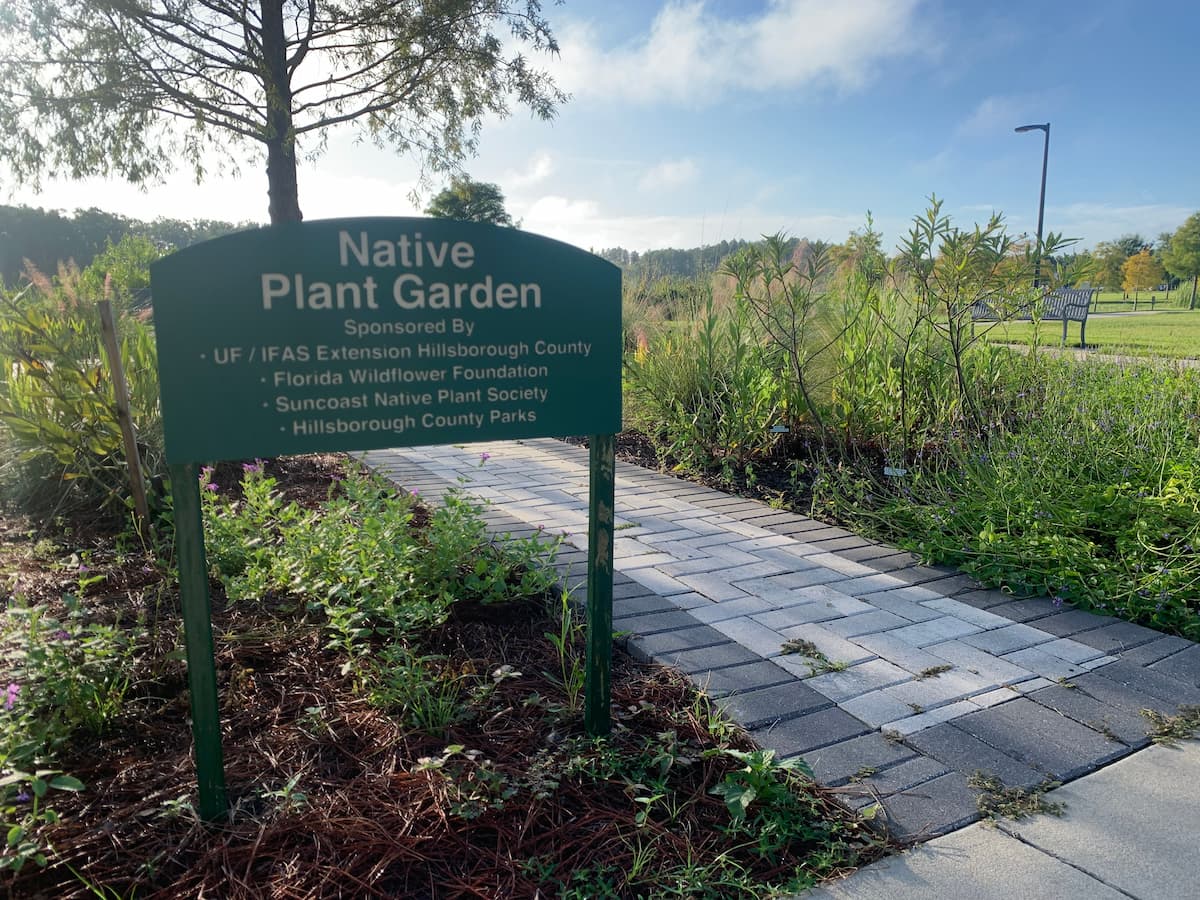The native plant garden at a park near my home inspired my wife and me to turn some of our yard into a native landscape.
What’s amazing about growing a native garden is that it really isn’t that hard.
And it’s incredibly low maintenance once it’s established.
And one of the coolest things about native plant gardens that are done the right way? They attract pollinators!
Planning A Native Plant Garden
If you want to start a native plant garden in your yard, one of the first places to start for resources is your local garden extension. I’m grateful to have a gardening extension service in my area thanks to the University of Florida.
You may also try looking for resources from your local garden club or horticultural society. Still aren’t having any luck? Try your local garden nursery.
Why choose local garden nurseries for native plants? While I do shop the big-box garden stores for many yard supplies, the local garden nursery near me has experts on hands who know local plants. But you shouldn’t rely only on what your local garden supplier has on hand to determine what would grow best in your yard. My wife and I live within 50 miles or so of three different USDA climate zones, so we need to be mindful of what plants we’re buying where!
And if you thought you knew which climate zone you’re in, you might want to check again. Climate change has caused many USDA hardiness zone boundaries to migrate over the years. And this can make the difference between what will or won’t grow in your yard… Or, what might have a life cycle more like an annual rather than a perennial — or vice versa.
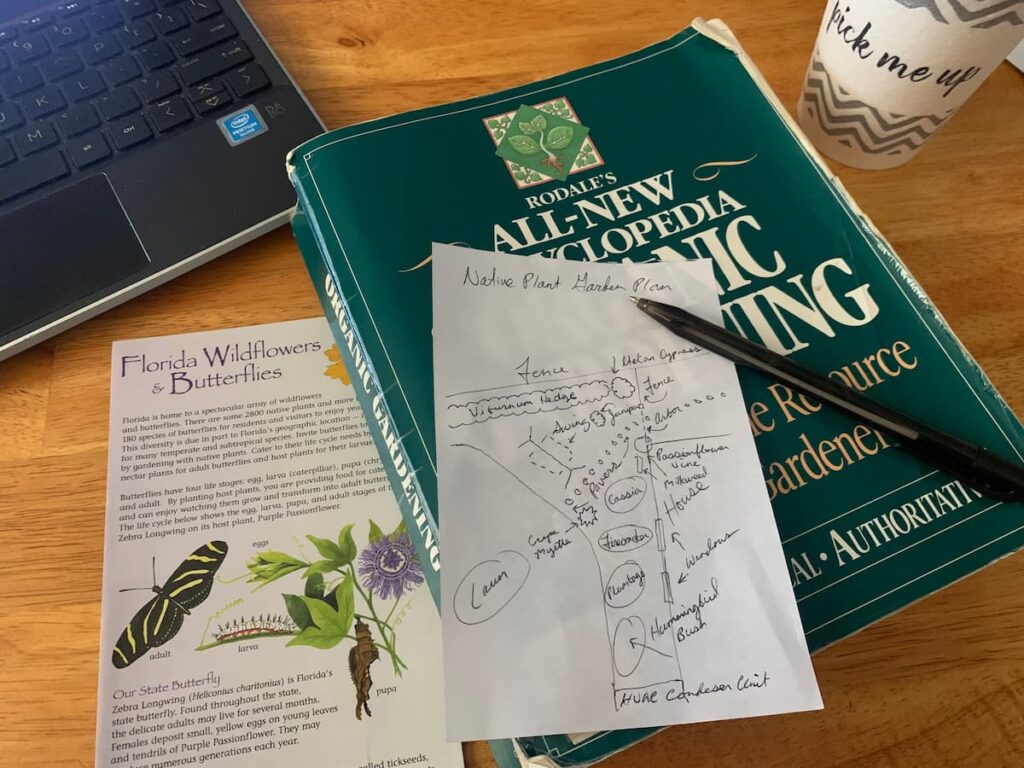
When planning your native plant garden, you should also consider what your goals are.
Hope to attract pollinators?
Want to replace your entire landscape with native plants or just certain areas of your yard?
What’s your soil pH?
What about light — full sun, partial shade, or a mix?
Does your yard drain well or is it situated near a lake or wetland?
These are all questions you must answer when determining what native plants will thrive in your yard!
How To Turn Your Yard Into A Garden
I’ve written about the task of transforming a lawn into a landscape. And let me tell you, there are many different ways to do this. Some are more labor-intensive than others, while the alternatives that don’t involve picking up a shovel may mean having to wait weeks or even months to kill your grass through smothering or natural means.
My wife and I took shovel to shoe and began digging when we turned our yard into a native plant garden.
The main point I hope to drive home here isn’t so much about how to get rid of the grass. It’s about how to curate successful native plant gardens.
And it’s my hope that you’ve taken time to do some homework on what native plants will grow well in your yard given its soil, light, and moisture conditions. Double points if you’re also planting to attract and host pollinators. Because goodness knows those beneficial creatures need all the help they can get these days.
Above all, don’t forget the principle of right plant, right place. Be sure you’re putting plants in places where they’re going to naturally thrive. But not only that — don’t plant flowers, shrubs, and other greenery too close to one another or too close to your home or other structures.
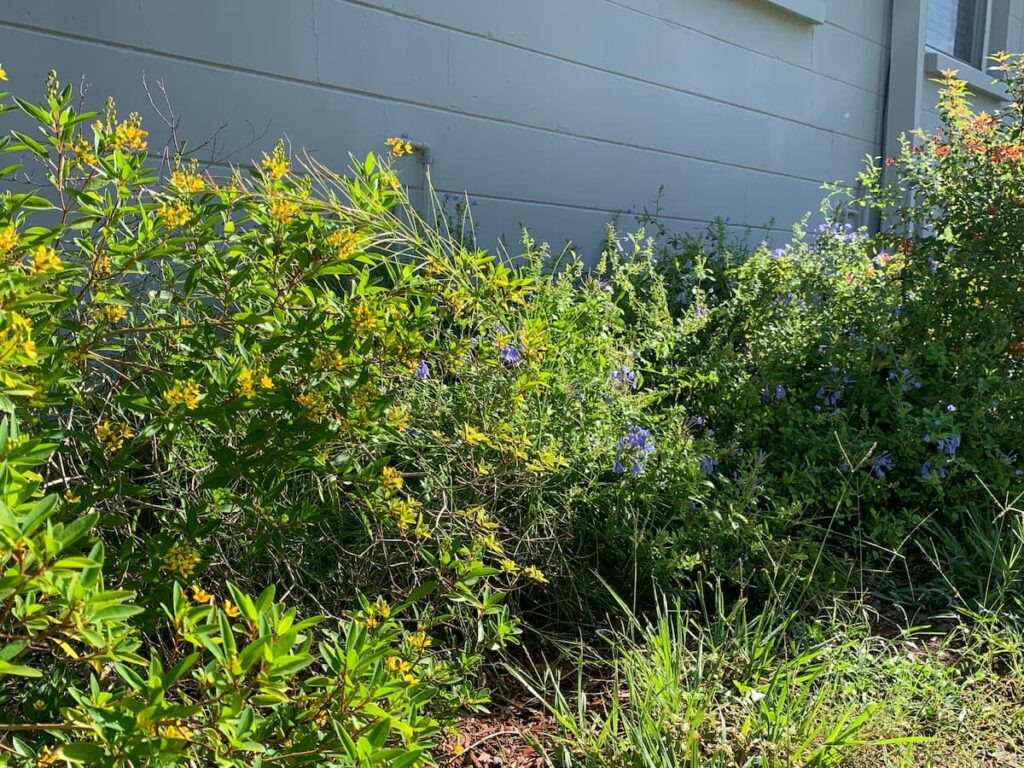
Our native plant garden, as you see above, is just about right… Our firecracker plant (front middle) has tried taking over the cassia in the left foreground. But our plumbago (center rear) and hummingbird bush (rear right) seem to coexist and respect each other’s boundaries pretty well.
Enjoying The Fruits Of Your Labor In The Garden
What’s more fun than turning your yard into a native plant garden? I think maybe watching your plants thrive — and seeing Mother Nature enjoy it, too. You see, once you put the hard work into creating it, you can almost sit back and relax as it does the rest.
One of the many reasons people plant native landscapes is because they are well adapted to your environment. Assuming you’ve put the right plants in the right place, you’re pretty much assured of good results. Oh, sure — an unusually dry summer, extra warm winter, or unseasonably cool spring might upset the apple cart a little. You might need to water a little more during droughts to prevent heat stress or cover your tender plants on a chilly winter’s eve. But average conditions for your area should be kind to your native plant garden.
I think one of the most fascinating things about planting a native landscape as my wife and I have been doing in phases is to see how local creatures start to inhabit the garden. This has especially been the case with our native pollinator garden. We see bees buzzing by all the time. And as for butterflies? Well, they flit in for drinks of nectar.
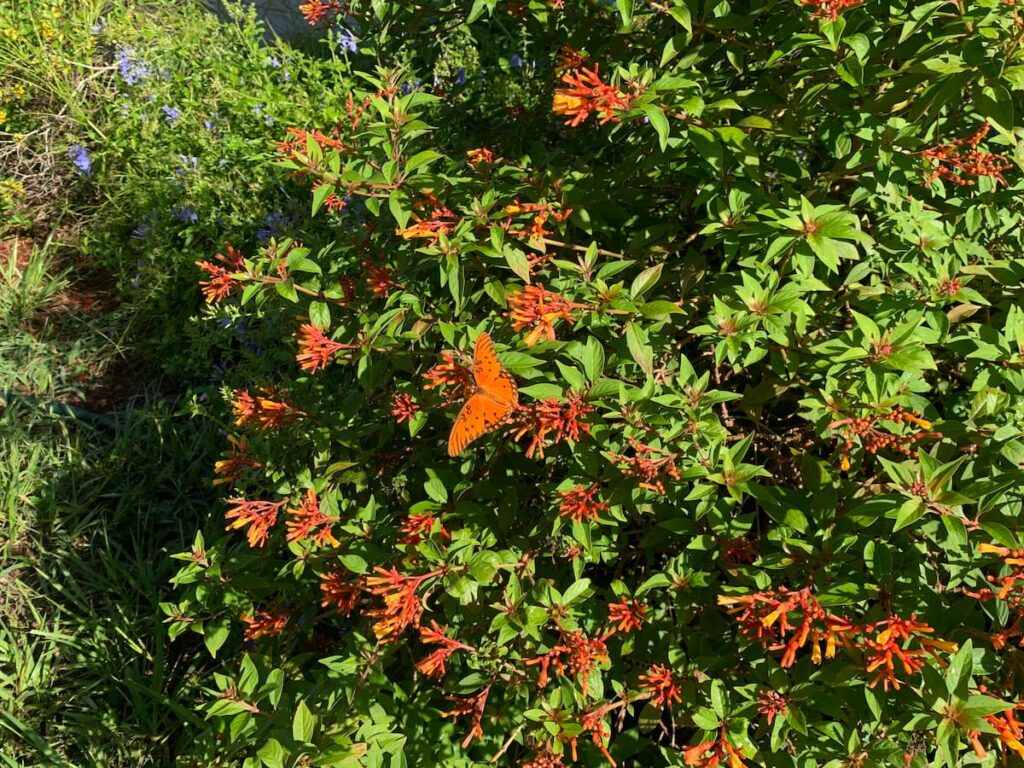
They also lay eggs. We know this by the many caterpillars munching through our milkweeds and passionflower vines. And we’ve even seen butterflies emerging from their chrysalises in our native plant garden!
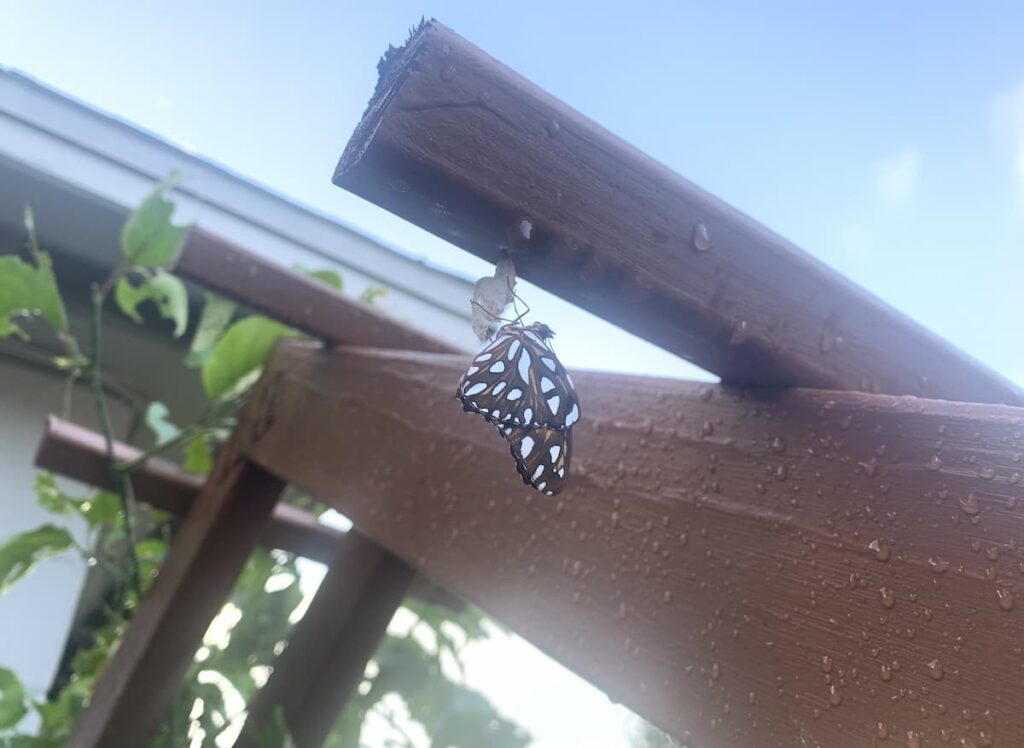
And there’s very little maintenance to speak of. Just some pruning back of overgrowth, occasional weeding by hand, watering during dry spells, and that’s about it. Raising native plant gardens is a breeze, and I’m pretty sure you’ll have the same opinion once you try your hand at it, too.
